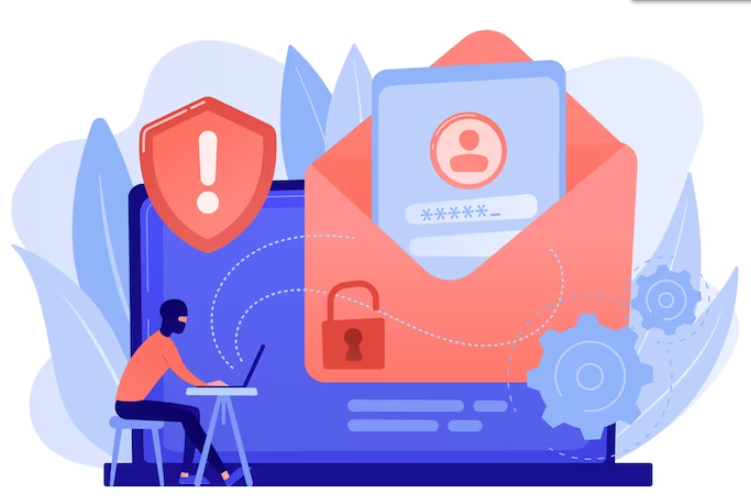Watch video summary
Schedule a Free Consultation Call Today
Discover how we can help you overcome, the latest payment challenges.
I. Introduction
In today’s digital era, the number of fraud cases targeting businesses has been on the rise. Businesses of all sizes, across various industries, face increasing threats to their financial stability, customer trust, and reputation. Fraud prevention is not only essential for protecting your business but also for ensuring the safety and security of your customers. This article aims to provide an overview of the types of fraud, measures to implement for fraud prevention, the role of technology, and the importance of responding effectively to fraud incidents.
II. Understanding the types of fraud
Fraud can take various forms, and understanding these is crucial for businesses to protect themselves effectively. Below are the most common types of fraud:
A. Cyber fraud Phishing:
This is a common form of cyber fraud where attackers send emails or messages disguised as legitimate sources to trick individuals into revealing sensitive information, such as login credentials or financial information. Businesses must train employees to recognize phishing attempts and implement email security measures to reduce the risk.
Identity theft:
Criminals may steal personal or financial information to commit fraud, such as opening accounts or making unauthorized transactions in someone else’s name. Businesses should secure customer data and monitor for unusual account activity to prevent identity theft.
Malware attacks:
Malware, or malicious software, is designed to infiltrate computer systems, steal sensitive data, or disrupt operations. Businesses should invest in robust cybersecurity measures, including firewalls, antivirus software, and intrusion detection systems to prevent malware attacks.
B. Financial fraud Credit card fraud:
This occurs when fraudsters gain unauthorized access to credit card information and use it to make purchases or withdraw funds. Businesses should use secure payment gateways and implement two-factor authentication for online transactions to reduce the risk of credit card fraud.
Invoice fraud:
Fraudsters may send fake invoices, duplicate invoices, or manipulate existing ones to deceive businesses into making payments to the wrong account. To prevent invoice fraud, businesses should establish a robust invoice verification process, maintain up-to-date vendor information, and encourage employees to report any suspicious invoices.
Employee embezzlement:
This type of fraud involves employees misusing their positions to steal money or resources from the company. Implementing strong internal controls, such as segregation of duties, regular audits, and a clear code of conduct, can help minimize the risk of employee embezzlement.
C. Internal fraud Payroll fraud:
Payroll fraud can occur when employees manipulate payroll records to receive unearned compensation, such as falsifying timesheets or creating ghost employees. Implementing a transparent payroll system, conducting regular audits, and cross-checking employee records can help prevent payroll fraud.
Asset misappropriation:
This form of fraud involves the theft or misuse of company assets, such as inventory or equipment. Businesses should maintain accurate records of all assets, conduct regular inventory checks, and implement secure access controls to prevent asset misappropriation.
Intellectual property theft:
Intellectual property (IP) theft occurs when someone steals trade secrets, patents, or copyrighted material. To protect your business’s IP, establish strict confidentiality agreements, limit access to sensitive information, and regularly monitor for unauthorized disclosures.
III. Implementing fraud prevention measures
A. Employee education and training
Raising awareness about common fraud schemes: Regularly training employees on the various types of fraud and their warning signs can help create a more vigilant workforce. Educate employees about the potential impact of fraud on the business and the importance of reporting any suspicious activity.
Encouraging a culture of integrity and accountability:
Foster an environment that emphasizes ethical behavior’s and transparency. Establish clear policies and procedures for reporting concerns and ensure employees feel supported when raising issues.
B. Strengthening internal controls Segregation of duties:
Ensure that no single employee has control over all aspects of a financial transaction. Divide responsibilities among different employees to reduce the risk of fraud and encourage oversight.
Regular audits and reviews:
Conduct internal and external audits to assess the effectiveness of your fraud prevention measures and identify areas for improvement. Regularly review financial records, employee performance, and compliance with established policies and procedures.
Implementing a fraud reporting system:
Encourage employees, customers, and vendors to report potential fraud by providing anonymous reporting channels, such as a hotline or email. Establish protocols for investigating and addressing reports to ensure timely and appropriate action.
C. Securing financial transactions
Using secure payment gateways: Adopt secure and reliable payment processing systems to protect customer information and prevent unauthorized transactions. Ensure that your payment gateway complies with industry security standards, such as the Payment Card Industry Data Security Standard (PCI DSS).
Implementing two-factor authentication:
Require customers and employees to verify their identity through a secondary method, such as a text message or phone call, before granting access to sensitive information or processing transactions. This extra layer of security can significantly reduce the risk of unauthorized access.
Monitoring for unusual account activity:
Implement systems that automatically detect and flag unusual account activity, such as multiple failed logins attempts or large transactions. Regularly review these alerts and investigate any suspicious behaviour.

IV. Leveraging technology for fraud prevention
A. Artificial intelligence and machine learning
Fraud detection and prevention tools:
Utilize AI-driven tools that analyse large volumes of data to identify patterns and anomalies indicative of fraudulent activity. These tools can help businesses detect and prevent fraud more effectively by providing real-time monitoring and alerts.
Real-time monitoring and alerts:
Implement systems that monitor transactions, user behaviour, and network activity in real-time. This continuous monitoring allows businesses to detect and address potential fraud incidents more quickly, minimizing losses and protecting customer trust.
B. Data encryption and secure storage
Secure customer data management: Encrypt sensitive customer data, both in transit and at rest, to protect it from unauthorized access. Regularly review and update data security policies and procedures to ensure compliance with applicable data protection regulations.
Compliance with data protection regulations:
Familiarize yourself with relevant data protection laws and regulations, such as the General Data Protection Regulation (GDPR) or the California Consumer Privacy Act (CCPA). Implement necessary controls and processes to ensure your business remains compliant and maintains customer trust.
C. Multi-layered cybersecurity strategies
Firewalls and intrusion detection systems:
Employ robust firewalls to block unauthorized access to your network and intrusion detection systems to identify potential threats. Regularly update and patch these systems to ensure they remain effective against new threats.
Endpoint protection and secure access controls:
Implement endpoint protection solutions that secure devices connecting to your network, such as laptops, smartphones, and tablets. Establish secure access controls, such as strong passwords and multi-factor authentication, to prevent unauthorized access.
V. Responding to fraud incidents
A. Developing a comprehensive incident response plan
Identifying key stakeholders and responsibilities:
Designate a response team with clear roles and responsibilities to ensure a swift and coordinated response to fraud incidents. Include representatives from various departments, such as IT, legal, and finance.
Establishing communication protocols:
Develop clear guidelines for internal and external communication during a fraud incident. Determine how to inform affected customers, employees, and vendors, as well as any required notifications to regulatory authorities.
Engaging external experts when necessary:
Depending on the nature and complexity of the fraud incident, consider engaging external experts, such as forensic accountants or cybersecurity professionals, to assist with the investigation and remediation efforts.
Reporting incidents to relevant authorities:
Report fraud incidents to the appropriate law enforcement agencies, regulatory bodies, or financial institutions as required. Cooperating with authorities can help identify and apprehend fraudsters, recover losses, and potentially mitigate legal consequences.
C. Learning from incidents and improving prevention strategies
Analyzing root causes and implementing corrective actions:
After resolving a fraud incident, conduct a thorough analysis to identify the root causes and implement corrective actions to prevent similar occurrences in the future. Update policies, procedures, and controls as needed to address vulnerabilities.
Continually updating fraud prevention measures:
Fraud prevention is an ongoing process that requires regular updates and improvements. Stay informed about emerging fraud trends, new technologies, and best practices to ensure your business remains proactive and resilient against fraud.
VI. Conclusion
The importance of fraud prevention cannot be overstated. By understanding the various types of fraud, implementing effective prevention measures, leveraging technology, and responding appropriately to incidents, businesses can protect their financial stability, reputation, and customer trust. It is crucial for organizations to stay informed and proactive in the fight against fraud, making a continuous commitment to safeguarding their business and customers. With a comprehensive and adaptable fraud prevention strategy in place, your business will be better equipped to face and overcome the ever-evolving threats of the modern world.
In conclusion, safeguarding your business and customers from fraud is of paramount importance in today’s digital landscape. Facilero, as a leading payment provider, is committed to helping businesses securely process online payments while minimizing the risk of fraud. By offering cutting-edge fraud prevention tools, robust data encryption, and secure payment gateways, we enable businesses to provide a seamless and safe transaction experience for their customers. Furthermore, with continuous monitoring, real-time alerts, and a team of dedicated experts, Facilero ensures that your business stays one step ahead of evolving threats, allowing you to focus on growth and success. Partnering with Facilero is a strategic investment in the security and prosperity of your business, as well as the peace of mind of your valued customers. visit facilero.com today and schedule a complimentary consultation call to explore how Facilero can elevate your payment strategy and drive enduring success.
Get A Free Consultation
Book a free call with us to discuss how we can help you expand in new regions, scale, and get the cash flowing in your business.





